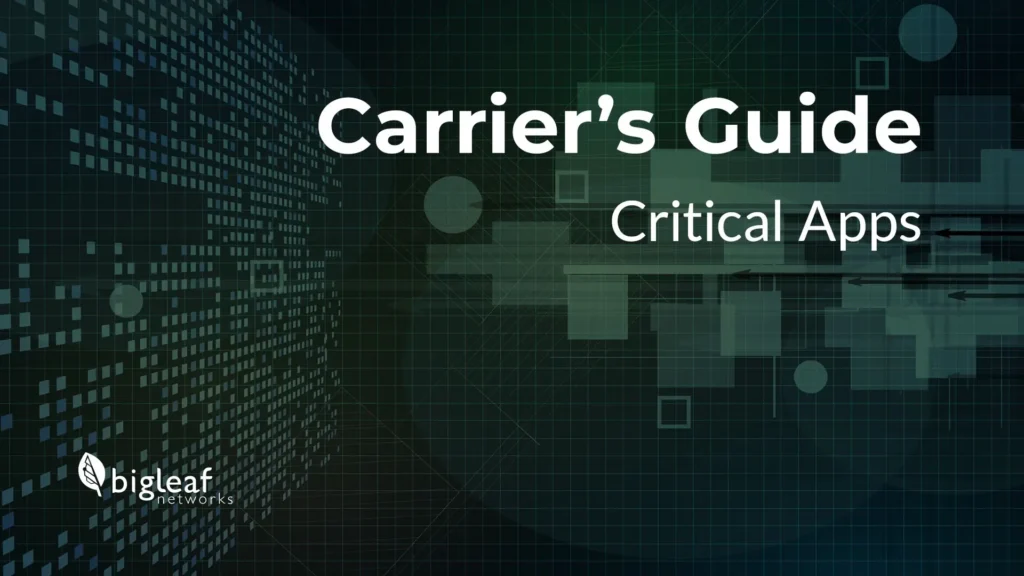True Business Continuity Builds Loyalty, and in this three-part blog series we’ve been exploring the realities carriers face in supporting business customers in a wireless-first, cloud-powered world. Because your customers don’t really care about ‘uptime’; they care about Zoom, VoIP, and POS actually working. All the time.
If you missed the previous blog in this series, click below for:
The Carrier’s Guide to True Network Insurance
The Carrier’s Guide to Supporting Wireless-First Businesses
Here in our final installment, we’ll focus on what really matters to end users: the performance of their applications.
Why “Uptime” Misses the Point
Carriers and technology vendors understandably love to talk about uptime. SLAs boasting 99.99% availability look great in marketing decks, but there’s a disconnect. Most small and mid-sized business leaders don’t calculate downtime percentages, and they rarely read SLA fine print.
What they do care about is whether their business-critical applications actually work. When a customer calls their carrier, they’re not asking about “uptime,” they’re asking:
- Why did my phone calls drop?
- Why couldn’t I check out customers at the register?
- Why was my Zoom meeting frozen for two minutes?
In other words, your customers don’t care about uptime; they care about outcomes.
Where Traditional Approaches Fall Short
Traditional SD-WAN and basic failover solutions often struggle to protect the real-world performance of cloud-based applications. A backup circuit may technically keep the internet “up,” but if sessions break and apps reset, the experience is indistinguishable from an outage. And for SMBs, adding another complex box or configuration burden is rarely an option.
For the carrier rep, this gap creates frustration. Customers think, “I’m paying for continuity, but my apps still don’t work.” That’s not just a support headache; it’s a very serious churn risk.
What True App Continuity Looks Like
Business-grade continuity requires more than redundant circuits. It’s about protecting the sessions and applications that drive daily operations. That means:
- Session continuity, so calls, VPNs, and cloud apps don’t drop when a circuit hiccups.
- App-aware routing, which dynamically adjusts traffic flow to get the bandwidth performance they need without requiring firewall changes.
- Real-time QoS, which ensures critical services like Teams, Slack, or Shopify are prioritized for smooth business operations.
With these capabilities in place, internet hiccups don’t translate into business disruptions. Apps simply keep running, so customers stay productive…and happy.
Why This Matters for Carriers
When customers experience smooth, uninterrupted app performance, they stay longer, trust more, and spend more. Framing reliability in terms of applications, not uptime, gives carrier reps a powerful differentiator in a market where bandwidth alone is commoditized.
The language is simple and compelling: “This keeps your apps running, even when the internet hiccups.” That’s a message business owners understand, and one they’re willing to invest in.
The Carrier Opportunity
For carriers, this is more than a technical feature set. It’s a path to stronger retention, higher-value upsells, and deeper trust with SMB customers who don’t want another “box” to manage. Reliability becomes a service you sell, not just a line item on a bill.
By focusing on application outcomes, carriers can reposition themselves from connectivity providers to continuity partners, delivering the business results that customers actually measure.
Takeaway for Carrier Reps
Uptime may sell on paper, but outcomes sell in practice. When you lead with app performance (protecting Zoom calls, VoIP sessions, point-of-sale transactions, and the tools businesses rely on every day) you move beyond commodity bandwidth.
That’s the true story of continuity: not just keeping circuits online, but keeping businesses running. And for carriers, that’s the difference between being seen as a vendor and being trusted as a partner.
If you’re ready to see how Bigleaf can help you deliver internet that doesn’t break apps, request a demo today.
